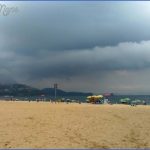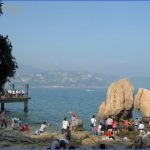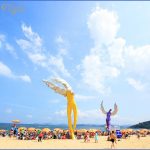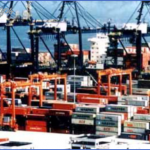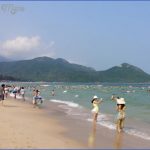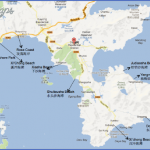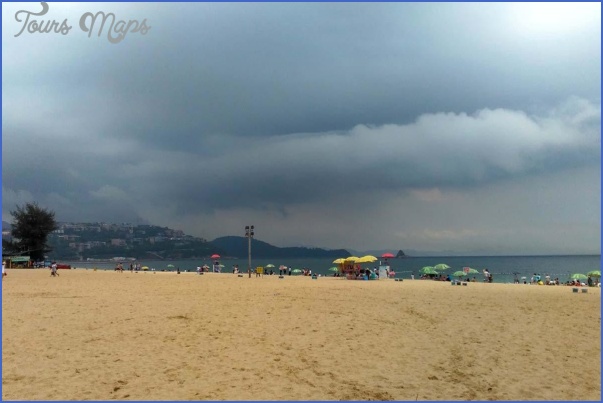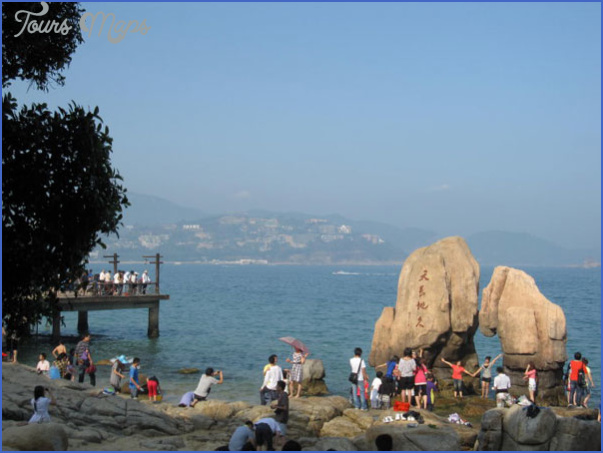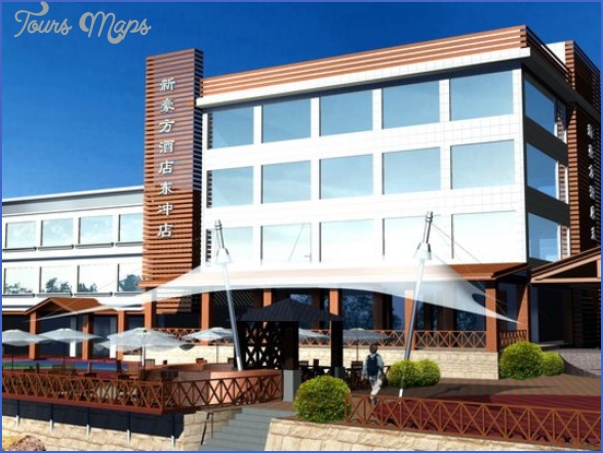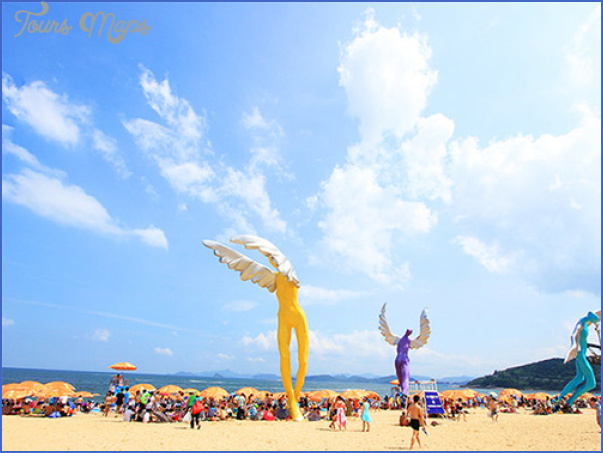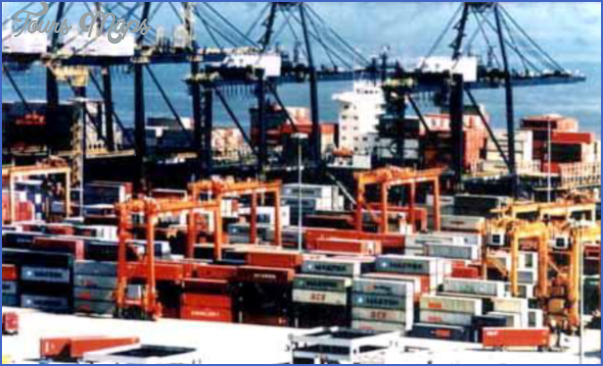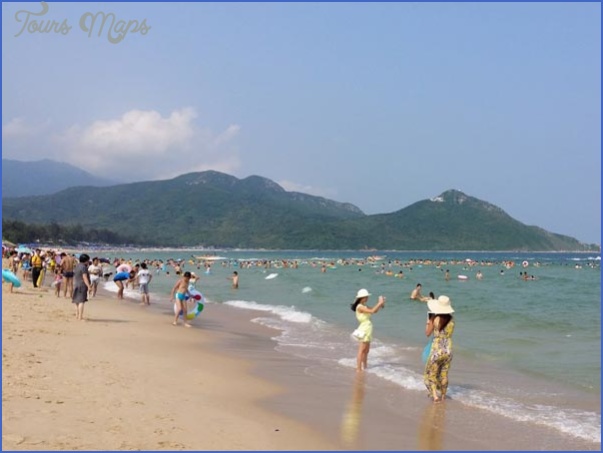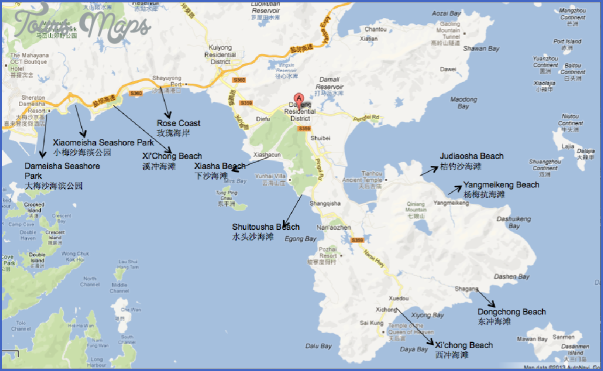For up date maps to Shenzhen Beaches go to: http://www.shenzhenparty.com/beaches-in-shenzhen
Rio, Honolulu, Durban, Sydney, Shenzhen… it doesn’t quite seem to go, does it? But Shenzhen is one of the world’s great beach cities. It shares the same geology as Hong Kong so it shouldn’t be surprising that we are always finding a new Repulse Bay, a great expanse of golden sand suddenly appearing between bold headlands and backed by the sort of mountains that one would expect to find in a Tang era landscape painting. Yet, unlike Repulse Bay, you don’t have to be a multi-millionaire to stay the night and wake up in the morning to one of the world’s greatest views.
Shenzhen has twenty-three declared beaches, all on the Dapeng Peninsula to the east of the city. Dapeng Peninsula lies between Mirs Bay on the West and Daya Bay on the East. It is rugged and mountainous, rising to a maximum of 867 metres at Qiniang Mountain in the south. To the west it has views of Hong Kong’s North-Eastern New Territories. In the north, the peninsula is home to a couple of medium size towns with a modest amount of light industry. The Daya Bay Nuclear Power Station is also on the peninsula. In the south, the peninsula is incorporated into the Qiniang Mountain National Park. In 2006, Chinese Geographic Magazine named Dapeng Peninsula as one of China’s top ten scenic spots. Most of the beaches have only been opened to tourism since 2006.
You may wonder why so many beaches have survived so close to a major city and, indeed, why it has taken so long to open them up to tourism. The answer lies in the phrase Hawaii of the East.
Now we are great fans of Hawaii, which we think of as a true paradise without peer and it occasionally pains us to hear its name bandied about so carelessly, even when it is applied to beautiful beaches like those in Shenzhen. But there is a sub-text to this phrase. All around the coast of China there are islands and beach resorts that are referred to as the Hawaii of the East. All have one thing in common. They are former military bases, untouched by development. So is it with the Dapeng Peninsula. Around the beaches you can still see pillboxes and other military installations.
This is particularly true at the beaches facing the island of Peng Chau. Peng Chau was formerly a part of the village of Xiasha but was handed over to the British as part of the 1898 New Territories settlement. It is only 250 metres off the coast of Jinshawan and Xiasha. If you have been to Peng Chau and witnessed its bucolic environment you can only wonder at how it justified such military attention. Still, this military stance had its positive aspects. Like ancient villages bypassed by railways and expressways, the beaches of the Dapeng Peninsula were preserved for our pleasure.
It is a Sunday morning. Typhoon Kaemmi has diverged slightly from last night’s trajectory and it looks like it might miss us all together. But it has sucked every bit of cloud within a thousand miles into its vortex and the weather is very clear and very, very hot. We are on a 360 bus travelling along Sungang Rd. and a holiday atmosphere prevails. Groups of people sit under the trees on the dividing strip of the road sipping iced lemon tea. Crowds of girls walk along the road under brightly coloured umbrellas, making the scene something like the Umbrellas of Cherbourg without the puddles.
Inside the bus there is a scarcely concealed air of summer excitement. Everybody is going to the beach: sunglasses, pedal pushers, brilliant yellow and red sun visors and baseball caps. The girls still have the same rhinestone studded multi-coloured sandals but the heels have dropped from 4 inches to sometimes as low as one inch.
The last time we did this trip we were on the 105 which goes along the winding beach road, but we agree that the 360, which takes the expressway, is much higher and therefore gives a much better view. We leave the container cranes of Yantian, by far one of the world’s busiest container ports and disappear into a tunnel. Momentary darkness and we suddenly erupt into Dameisha, the beginning of Shenzhen’s Riviera. A medium rise beach front, the magnificent Sheraton Dameisha Resort surrounded by coconut palms right on the beach, the Tower of Dreams. Then around a headland to Xiaomeisha, much less crowded being a paying beach, past the Disneyesque towers of Xiaomeisha Sea World and back onto the expressway. We rush into and out of tunnels, brilliant sunshine followed by darkness and then out again into the sun. As we look down the valleys we see distant vistas of the jagged peaks of the New Territories rising from the blue waters of Mirs Bay. Layers of mist seem to hover around the mountains; our more prosaic side thinks that this is a mere inversion layer and that the mist is probably sulphur dioxide but we dismiss this in favour of sharpening up our calligraphy brushes. Even the tower burning off excess natural gas and the oil terminals, which occasionally appear, don’t seem to be incongruous, but rather entirely apposite components in a 1960s socialist Chinese style scroll. Maybe the socialist paradise has actually arrived. If we listen carefully we can almost hear the state withering away.
We arrive in the town of Dapeng and get off the bus. Suddenly we are back in the third world. Everything is just that little bit shabby. Official taxis have disappeared and we are back to negotiating with the blue plate or illegal taxis. A man on a motorbike offers to take us to our destination on the back of his bike for a small fee. We find a driver who seems reasonable and continue on our journey, past the Ming Dynasty Dapeng Fort, past the Nuclear Power Station, and into the greenery of the National Park. Magnificent vistas open around every corner.
DAPENG FORT
See the section on historic Shenzhen
EASTERN SHENZHEN THE BEACHES Photo Gallery
Maybe You Like Them Too
- The Best Cities To Visit in The World
- World’s 10 Best Places To Visit
- Coolest Countries in the World to Visit
- Travel to Santorini, Greece
- Map of Barbados – Holiday in Barbados

